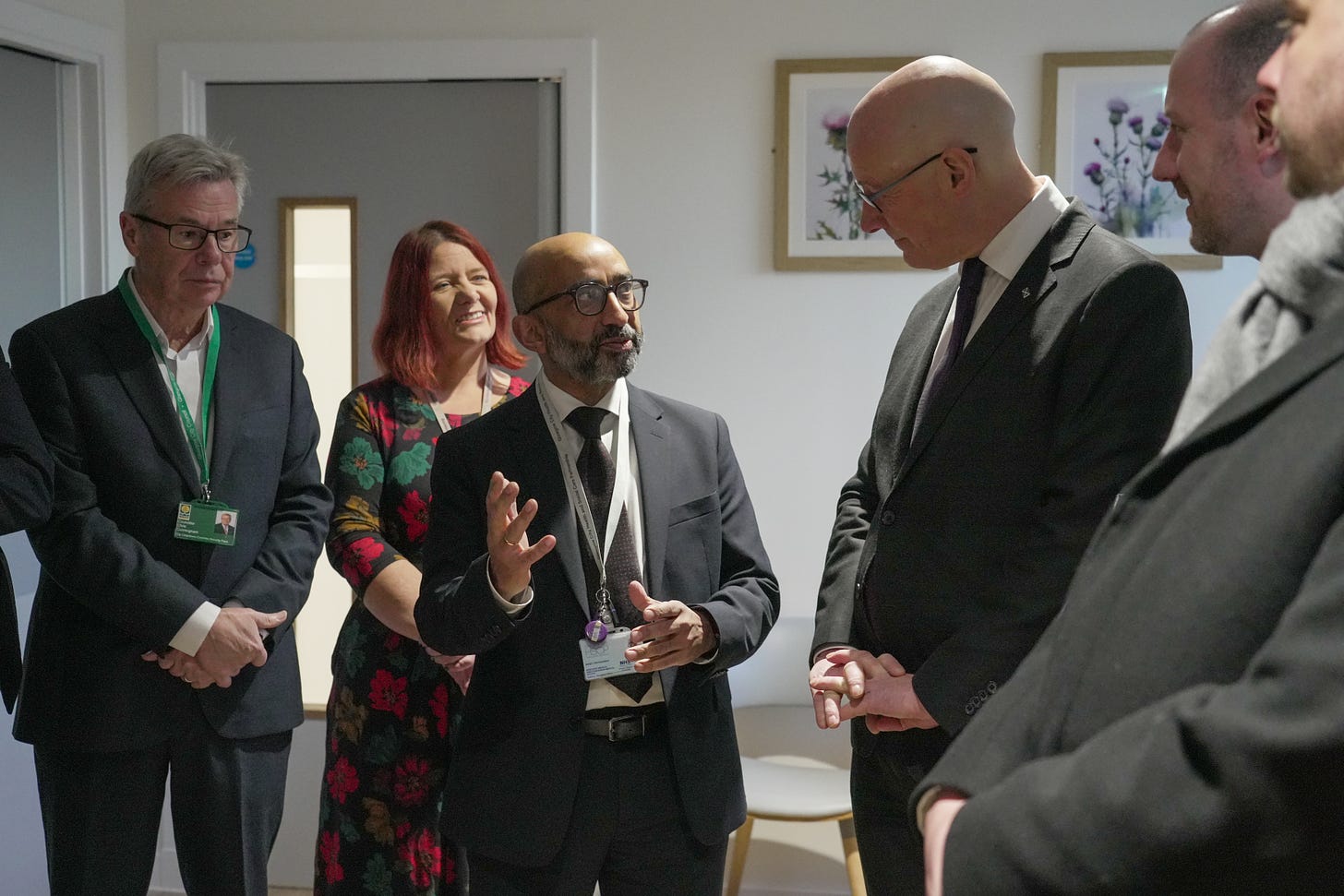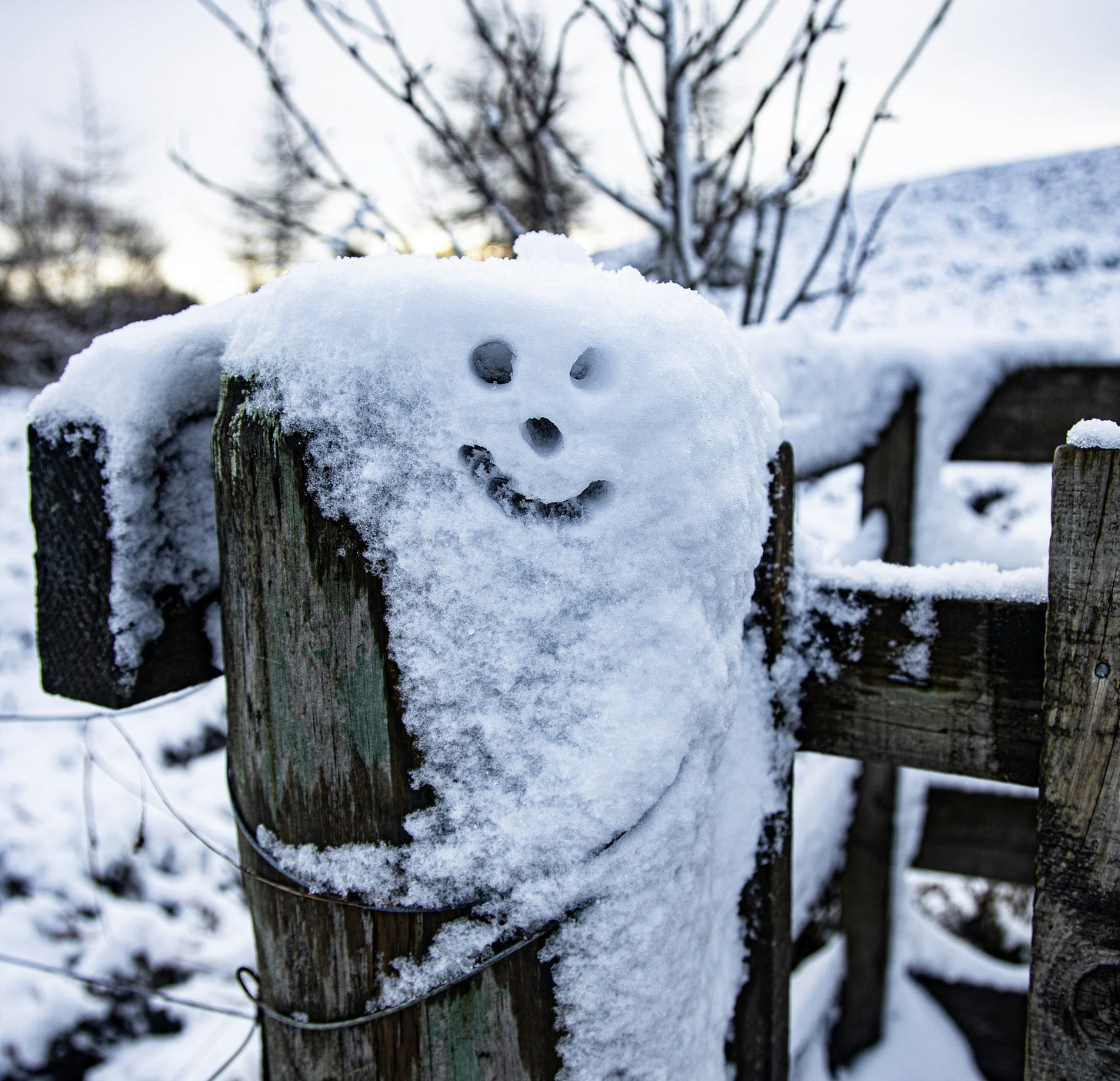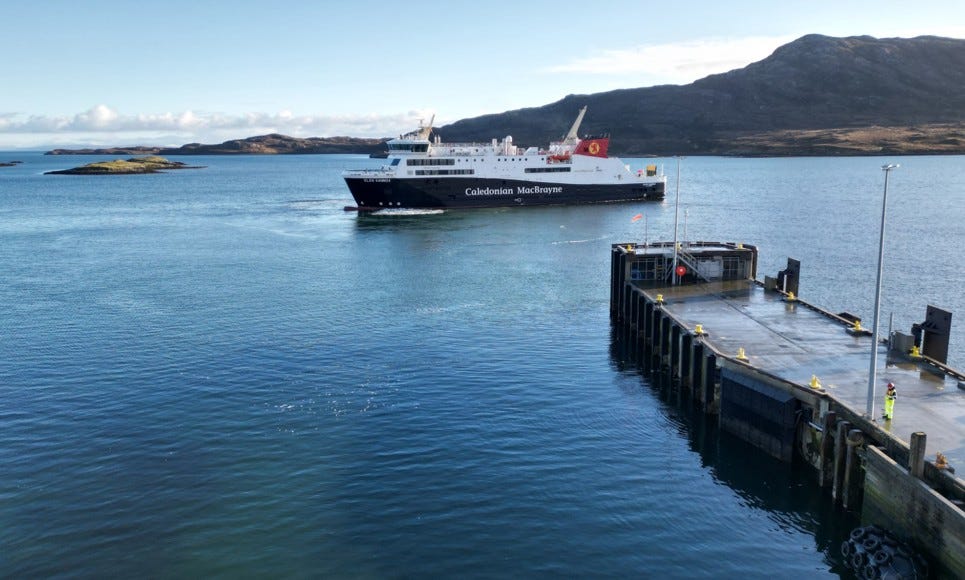What we know this year so far
It is going to be a challenge. We're going to need to know when to look, and when to look away. But here's some things we've found to keep us interested in the months to come.
Reality has come crashing in. We’ve packed away Christmas, Hogmanay is old news, and 2025 is the year we’ll need courage.
While Scotland shivered in snow and ice, the devastation of the Los Angeles fires dominated the news, throwing a deadly spotlight on climate change, global heating and the real consequences to our survival if we don’t make change a priority.
This as the incoming Trump administration and emboldened acolytes flooded social media with misinformation and political point scoring while Los Angeles was in flames.
Closer to home, Trump’s wingman Elon Musk took pot shots at the Starmer government and has some UK politicians vying for the honour of a mention or retweet by him. Or, you know, a £100 million donation towards a right-wing campaign war chest. And UK polls show Reform making gains against Labour.
So what can we do? This is what turns people away from the politics that determine our very lives. Anger and helplessness leave people distrustful of politicians, less inclined to vote and less inclined to even pay attention.
It’s this way the bastards win. They win when you look away.
Mind you, it’s essential to look away sometimes. This constant cycle of hate and horror is hard to bear; our advice is to take time out, find joy in simple things, count your blessings and appreciate what you have. Then go back to paying attention.
So, going into 2025, here are some things that caught our eye.

Lynx on the loose
News broke in early January of two lynx spotted in the Cairngorms National Park in the Dell of Killiehuntly area, near Kingussie.
Cairngorms National Park Authorities quickly determined they had been illegally released into the wild and weren’t likely to survive in the harsh winter. Highland Wildlife Park confirmed they weren’t their animals.
Teamwork between Police Scotland and the Royal Zoological Society of Scotland (RZSS) saw the cats safely caught in baited cages (cages with food in them), after RZSS staff monitored wildlife cameras and stayed awake on a freezing night until the lynx were safely contained.
David Barclay, manager of the RZSS Saving Wildcats team, said, “We set live trail cameras near baited traps and it was a long night for our specialist keepers who were taking turns to monitor any activity.
“It was amazing to see the lynx being captured safely and humanely, which makes the lack of sleep more than worth it.”
You can see the footage here. They are currently in quarantine at the Highland Wildlife Park, as required by biosecurity laws, and are likely to go to Edinburgh Zoo in time.
But wait, there’s more
But it didn’t end there. Two more animals were spotted on cameras in the same area the next day, believed to have been released at the same time. They too were safely captured.
The RZSS said all four cats were starving. One later died and a post mortem is being conducted.
RZSS Chief Executive David Field said, “We condemn the illegal release of these lynx in the strongest possible terms.
“It was a highly irresponsible act and it is very unlikely they would have survived in the wild due to a lack of adequate preparation.
“Their abandonment was reckless to the animals, the public, the community and nature.”
Lynx were native to Scotland but were driven to extinction around 1300 years ago. Feasibility studies around reintroducing them safely and humanely in areas of Scotland’s Highlands are currently under way.
They are the third largest predator in Europe after the brown bear and the wolf. Solitary and elusive, they typically hunt at night and stealthily avoid humans, so they are rarely seen. They will normally feed on deer, mountain hares and other small mammals.
Scotland’s first safe injecting rooms
In a triumph for a humane approach to drug addiction, Scotland’s first safe injecting rooms opened in Glasgow’s East End on Monday, January 13.
The first such facility in the UK, this is the result of a long campaign. With drug laws reserved to Westminster, the proposal by Glasgow Council, backed by the Scottish Government, was rejected by previous Tory governments for almost 10 years.

The Thistle will open 365 days a year from 9am to 9pm, and provide a safe, clean environment for the most vulnerable addicts to take their own drugs under the supervision of health professionals.
It is a project being keenly watched by other councils across the UK.
Scotland continues to have the worst rate of drug deaths in Europe, with the latest figures showing 1172 people died from drug misuse in 2023 – a rise of 12% on the previous year.
The Scottish Government is providing £2 million a year in funding for the centre.
Gillian Lord was working as a journalist in Sydney, Australia, when the first safe injecting room was opened in Kings Cross.
The benefits were almost immediately visible. Less needles on the streets, less ambulances being called to revivals, less deaths by overdose.
A 2022 study by the University of New South Wales estimated that staff were able to save the lives of some 10,600 who overdosed on the premises, and in the 20 years since it opened, not a single fatal overdose had occurred there.

Arts, culture and the future
An additional £34 million in funding for arts and culture was included in the Scottish Government’s draft budget for 2025-26, something Culture Secretary Angus Robertson described as a “game changer.”
This is against a challenging fiscal backdrop, including the UK government’s increase of NI contributions for employers, which is significantly increasing staffing costs for cultural institutions.
This additional cost was cited by National Galleries of Scotland recently, when they warned they may need to shutter one of their galleries in future, unless they received urgent funding assistance.
There will be many examples like this. And it’s timely to remind ourselves that the Scottish Budget is finite. We are reliant on ‘pocket money’ from Westminster to run our country as a devolved - not independent - administration.
But the good news is Scots engagement with arts and culture remains encouragingly high.
The Scottish Household Survey found that in 2023, 76% of adults attended a cultural event or place of culture in the last 12 months. When cinema was excluded, attendance was lower at 69%.
This is good news. A nation in touch with its culture is a nation in tune with itself.
Stepping in at Pitlochry
In other news, beloved Scottish actor, singer, writer, producer and director Alan Cumming has taken up his position as Artistic Director at Pitlochry Festival Theatre.
Speaking on his appointment, Cumming said “For me, all roads lead to the theatre and all roads lead to Scotland. I am a theatre animal at heart and, like Robert Burns, my heart is in the Highlands. To become Pitlochry Festival Theatre’s Artistic Director is a homecoming I embrace with all my experience, all my passion and, yes, all my heart.”
We have no doubt he will do a lot to raise the profile of the beloved theatre in the hills, and of Scottish performing arts generally.
The ferries! The ferries!
Scots will tell you one of the favourite political weapons to whip the Scottish government with is the ferries. Seldom do you see the words ‘ferry’ without it being accompanied by ‘fiasco’.
We’re saving this for a whole story - there’s too much to even try to explain here - but suffice to say, the MV Glen Sannox safely completed her maiden voyage from Troon to the Isle of Arran.
More than six years late and, along with her sister ferry the Glen Rosa, millions of pounds over budget, the Glen Sannox sailed into Arran without further mishap.
With a capacity for 127 cars, 16 heavy goods vehicles and 852 passengers, Glen Sannox will help relieve pressures on the state-owned operator CalMac.
She is the first UK-built ship capable of running off liquefied natural gas (LNG) as well as conventional diesel, and the first new large vessel delivered to CalMac in more than a decade.
To give you an idea how long…
There’s still no sign of an end to the long-running Police Scotland investigation into the alleged mismanagement of SNP finances and the police investigation into this, Operation Branchform.
This now enters its fourth year and has so far cost £1.8 million, more than four times the amount the SNP is being investigated over.
Going in to 2025, we’d like to thank Scotland’s Wee Ginger Dug for giving us historical perspective of some things that concluded in the same time, or more quickly than Branchform so far.
These include: The investigation, arrests, trials and sentencing of the Great Train robbers, the Watergate investigation, building the Eiffel Tower and building the Empire State Building, the Spanish Civil War and the American Civil War, as well as the first Gulf War.
There’s more. You can see his piece in the National here.
And thanks for reading us. There’s much more to come in 2025. We’re continually delighted at your support, and even at where you all come from. We never expected so many international readers, as well as those within the borders of our beloved Scotland. Thanks!






